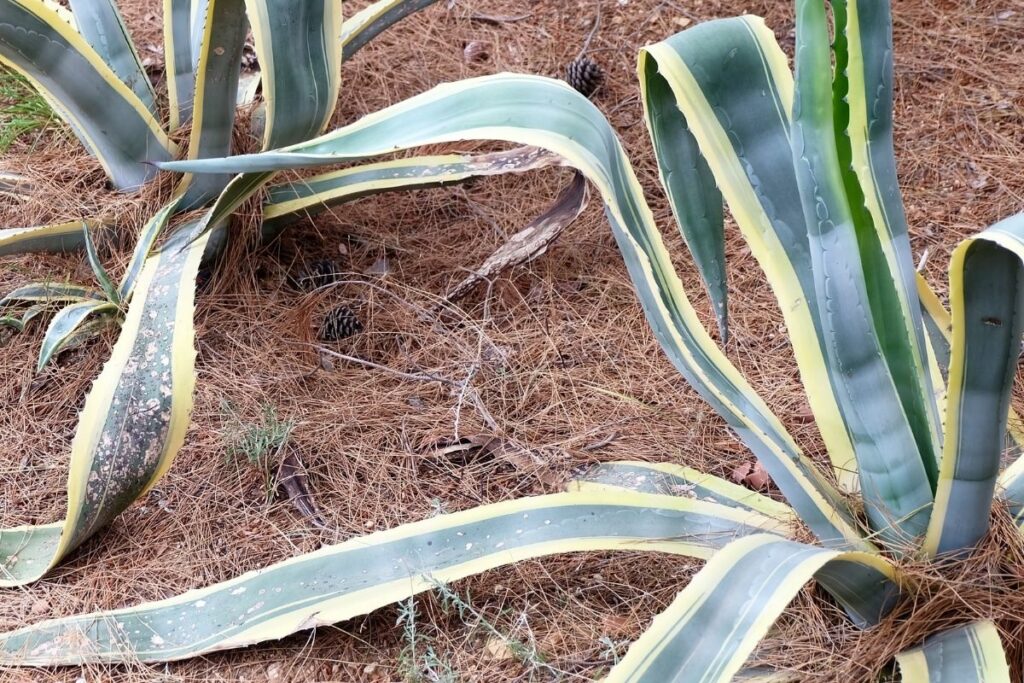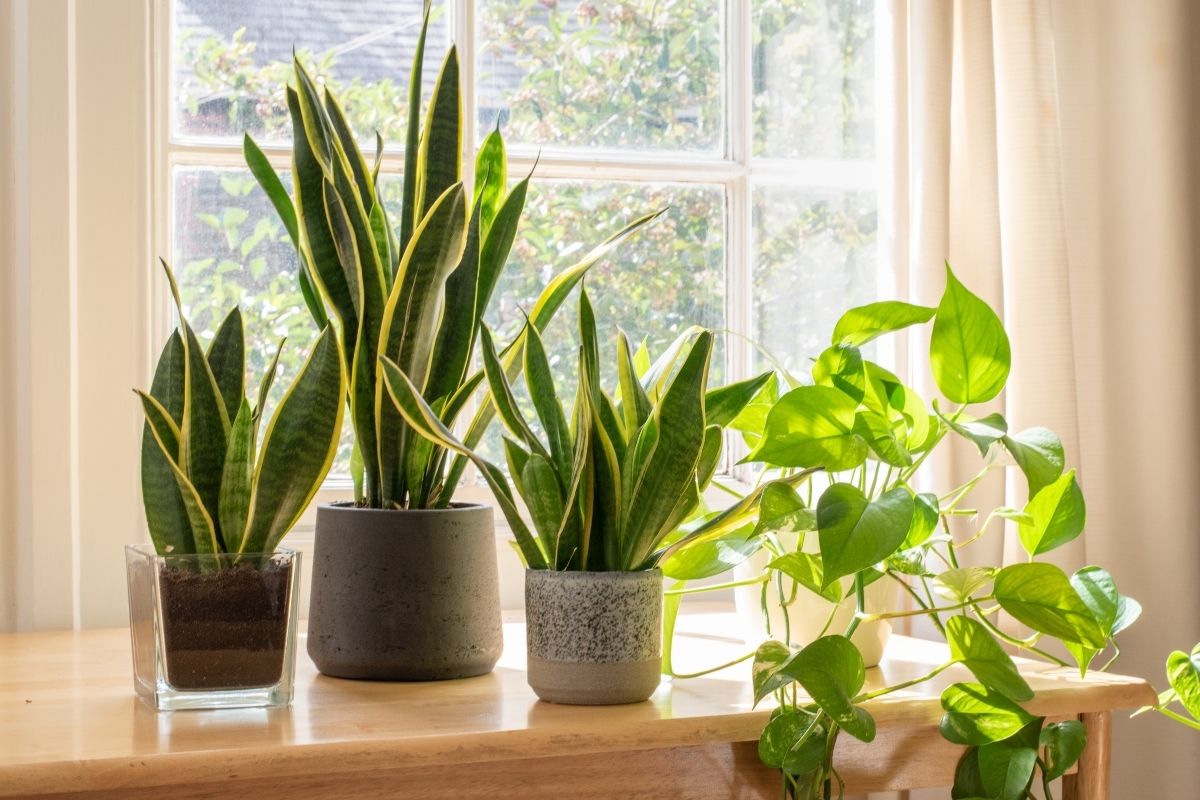Caring for houseplants can be a fun and rewarding experience, especially when you have created the ideal environment for your various specimens.

Keeping house plants has become more popular in recent years, with whole sections of the internet being dedicated to horticulture and plant care.
Nowadays, a popular species to keep in your home is the snake plant, which is known for its pointed leaves and vibrant fruit.
However, this does not mean that caring for a snake plant is easy, as the plant will need certain conditions to thrive in a domestic environment, which could harm it if left unattended.
Fortunately, snake plants are capable of altering others about the status of their health, with the species demonstrating certain telltale signs that convey their distress.
So if you want to know more about these signs and how to tell if your snake plant is dying, then you have come to the right place.
In the following article, we have gathered some important information concerning snake plants and their conditions, so that you can learn more about the signs of distress.
We have also included useful tips on how you can revive your snake plant should these symptoms appear.
So if you want to keep your snake plant healthy, this article has everything you need to get started…
Overwatering Snake Plants
Snake plants are a species of succulent that is native to tropical Africa, where it has adapted to survive in harsh soil and low humidity.
Because of this, the species does not need to be watered as frequently as other plants, as it has evolved to withstand infrequent rainfall and desert conditions.
Unfortunately, overwatering is often the main cause of a dying snake plant, which can lead to the leaves turning yellow and an overall sickly appearance.
Therefore snake plants should be watered less often than other house plants, with the species also requiring soil that drains faster to reduce moisture around the roots.
To ensure that your snake plant grows successfully, you will also need to emulate some of the conditions from its natural environment, such as harsh or sandy soil and only watering the plant when the earth has been thoroughly drained.
If the soil does not dry out between waterings, then this could have a significant impact on the plant’s health, as the species is not known to thrive in moist conditions.
This could result in the snake plant turning yellow or brown before eventually developing rot and meeting its end.
How To Revive Overwatered Snake Plants
Fortunately, there are several methods that can be used to revive an overwatered snake plant, which we have outlined below:
Reduce Watering
If you are watering your snake plant more than once a week, then you are watering it too often. In most cases, snake plants should only be watered once every 2 – 3 weeks, as this will give the soil enough time to drain.
When faced with yellow or brown leaves, it is recommended that you allow the soil to dry before watering the plant again.
Replace Soil
While watering your snake plant less frequently can have a significant impact on its health, this does not mean that it is impervious to overwatering. In fact, the leaves could still turn yellow and droop if the soil is retaining moisture and draining slowly, which is why you may need to consider replacing it.
If the snake plant has been grown in ordinary potting soil, then you will need to empty it out and replace the soil with a specially formulated alternative made for succulents and cacti, which will replicate the natural environment of the species.
By doing this, you will reduce the chances of the plant being drowned, which will also reduce yellow leaves and drooping.
Drainage Holes
When caring for a snake plant, it is important that excess water can drain freely from the base of the pot, which helps to prevent the roots from being in damp soil for long periods of time.
In most cases, snake plants will thrive in pots that are proportional to their size, especially when those pots come with drainage holes that allow the moisture to escape.
Underwatered Snake Plants

If the leaves on your snake plant have started to wrinkle and curl inwards, then this could be a symptom of underwatering or cold damage.
Because snake plants are known for their complicated relationship with water, many people will refrain from watering their plants until it is too late, which can result in the plant dying due to a lack of moisture.
As previously mentioned, snake plants are capable of surviving for 2-3 weeks without water, although the species will still require a generous soaking to remain healthy.
This is because the plant will store the moisture in its leaves, which helps to keep it hydrated during the drought season of its natural environment.
Of course, snake plants are also a tropical species, which means they are incapable of surviving in cold or snowy climates. Because of this, the leaves will begin to curl if the plant is grown in a cold room that does not meet the required temperature.
In most cases, snake plants will only thrive in temperatures between 50-75 degrees Fahrenheit. However, if the species is exposed to increasingly cold climates, the leaves will begin to curl before turning soft and rotten.
How To Revive Underwatered Snake Plants
Fortunately, there are several methods that can be used to revive underwatered snake plants, which we have outlined below:
Submerge Roots
If the leaves on your snake plant have started to curl, one of the best ways to combat the problem is by removing the plant from its pot and submerging the root ball for 10 minutes in a basin of water.
This should allow enough time for the roots to draw up as much water as the plant needs.
Generous Soak
Watering your snake plant too lightly will only help to moisten the top inch of soil, which means the water will not be able to reach the roots.
So the next time you water your snake plant, remember to give the pot a generous soak, as this will make sure that the roots are receiving the necessary amount of water they need to keep the plant healthy and thriving.
Replace Soil
Sometimes the soil of the snake plant could be the cause of its underwatering, as certain soils do not retain water and let it run off the surface.
To prevent this, it is recommended that you replace the soil with a formulated alternative for succulents and cacti, as this will make sure that the plant is getting enough water to thrive in your home.
Maintain Temperature
If your snake plant is suffering from cold damage, then you can revive it by keeping the plant in a room that is consistently warmer than 50 degrees Fahrenheit.
However, if the leaves have started to turn mushy, you may need to remove them with a pair of sterile pruners to prevent the damage from spreading.
Final Thoughts
Overwatering and underwatering are the two main causes of a dying snake plant, which can both be determined by a series of unique symptoms.
In most cases, overwatered snake plants will start to turn yellow and droop, while underwatered snake plants are known to curl and rot.
Fortunately, these symptoms can be prevented or reduced by exposing your snake to the correct conditions, whether that be bi-weekly waterings or environments that do not go below 50 degrees.
- Best Hanging Plant For Low Light - September 4, 2023
- Best Indoor Plants Florida - August 28, 2023
- Best Plants For Bathroom Smells - August 21, 2023








